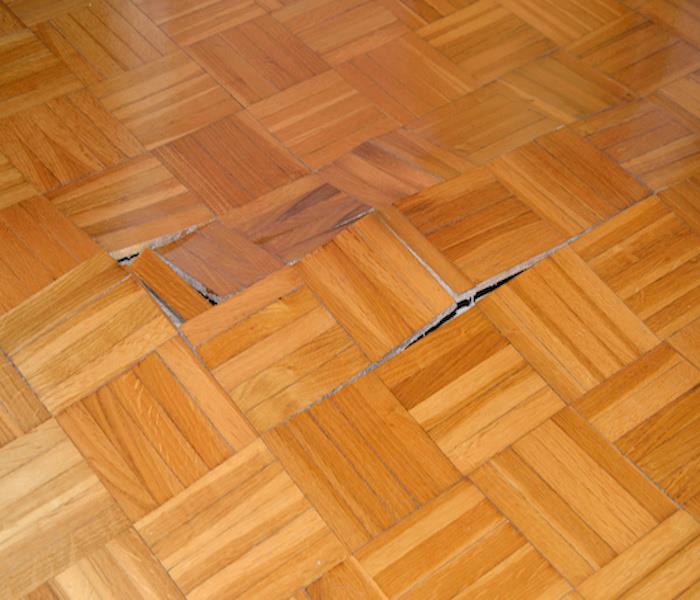How to Handle Water Damage to Floors
8/15/2016 (Permalink)
One of the biggest fears of homeowners is the threat of water damage. If not quickly addressed, water damage has the potential to worsen and create bigger problems that negatively affects the health and well-being of the building’s occupants. Mold, for example, thrives in an environment like a water damaged building and has the ability to create problems throughout the building. It can also cause structural damage to the building over time. Understanding how to identify whether or not you have water damage and knowing what to do when you do identify water damage is key to quickly getting the issue resolved which will allow you to limit the damage.
Causes of Water Damage
There are many parts of a building that are susceptible to water damage like the ceiling and walls. Another area that’s susceptible to water damage is flooring. There are many different reasons that you may have water damage to your flooring. A pipe that is leaking, a roof that is leaking, or a drink that has spilled are all potential causes of water damaged flooring. Flash flooding is likely to cause more water damage to the floor than anything else. Finding out the cause of the water damage is key to knowing how much water damage exists. It will tell you where to look for the water damage and how extensive the cleanup will be.
Signs of a Water Damaged Floor
If you think that you may have water damage to your floor, you need to be aware of the signs that there is water damage to your flooring. If you have suffered a roof leak, a leaking pipe, or something else that could potentially cause water damage, you’ll need to be on the lookout for the signs that there’s water damage to your floor. These signs include a discoloration of the carpet, a sagging spot in the floor, or rotten wood the sinks beneath the shoes. If wood is rotting, it will sag down more than a hard wood floor. It also won’t echo as well if you knock on it. If any of these signs are apparent on your floors, you’ll know that you must take action to prevent any further damage from occurring.
Finding the Water Damage
Noticing the signs of a water damaged floor is the first step, but more needs to be done to find out exactly where the water damage is and the extent of the damage. One way you can find out more about the damage is to pull up the carpet. Pulling up the carpet will show definite signs if there is water damage. If you don’t want to pull up any of the carpet, you can look underneath the crawl space. However, if there is water damage to the flooring underneath the carpet, it will eventually have to be pulled up regardless. If the carpet is discolored or has signs of mildew, it will need to be replaced.
Professionals Should Be Brought in to Restore
Just like with any other type of water damage, if there is water damage to the floors, professionals should be called in to handle the job. Professionals know the necessary steps, safety procedures, and have the training to ensure that the area is properly and safely cleaned up. If you’re inexperienced in cleaning up water damage, attempting to take on the task yourself could result in mistakes that could further damage the building or create health hazards for the occupants of the building. Hiring professionals to handle the job will ensure that the building will be fully restored and that no additional damage will be caused. When they’re finished, you’ll be able to reoccupy the building without fear that there’s any damage or health hazards in the building due to the water damaged floors.
Water damage is a worry for all homeowners. In addition to ceilings and walls, floors are also a part of the house that’s susceptible to water damage. Anything from a roof leak to a leaking pipe or spilled drink could potentially result in water damage to the floor. If you do suffer water damage to your floors, or any other part of your house, call on the professionals at SERVPRO to ensure a proper and safe restoration.

 24/7 Emergency Service
24/7 Emergency Service
